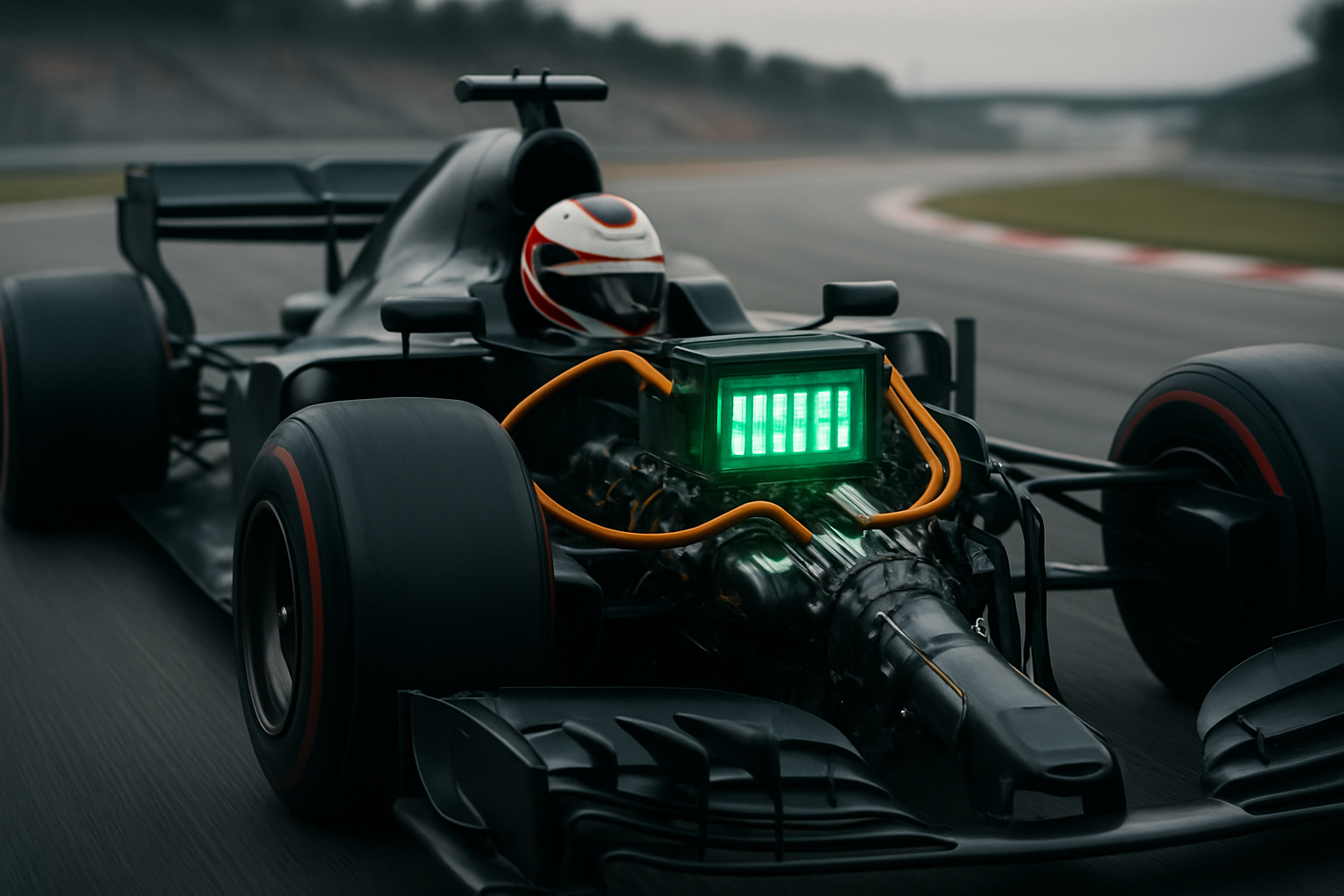Kinetic Energy Recovery Systems: Revolutionizing Motorsport Efficiency
In the high-octane world of motorsport, every fraction of a second counts. Enter Kinetic Energy Recovery Systems (KERS), a groundbreaking technology that's transforming the landscape of racing. This innovative system harnesses the power of motion, converting kinetic energy typically lost during braking into a potent burst of acceleration. But how exactly does KERS work, and what impact is it having on the track? Let's dive into the fascinating world of energy recovery in motorsport.

How KERS Works
At its core, KERS operates on the principle of energy conversion. When a driver applies the brakes, the system kicks into action. Instead of allowing all the kinetic energy to dissipate as heat, KERS captures a portion of it. This energy is then stored, either in a battery (electrical KERS) or a flywheel (mechanical KERS). When the driver needs an extra boost, they can deploy this stored energy at the push of a button, providing a significant power increase for a short duration.
Electrical vs. Mechanical KERS
The two main types of KERS each have their unique advantages. Electrical KERS, favored in Formula 1, uses a motor-generator unit connected to the drivetrain. During braking, this unit acts as a generator, converting kinetic energy into electrical energy stored in a battery. When activated, it functions as a motor, delivering power back to the wheels. Mechanical KERS, on the other hand, employs a flywheel to store rotational energy. This system, while less common in top-tier racing, offers advantages in simplicity and rapid energy transfer.
Impact on Racing Strategy
KERS has fundamentally altered racing dynamics. Drivers must now balance the use of stored energy with traditional racing lines and overtaking techniques. The strategic deployment of KERS can provide crucial overtaking opportunities or defend against advancing competitors. This additional layer of complexity has elevated the importance of energy management in a driver’s skillset, adding a fascinating tactical element to races.
Beyond the Track: Real-World Applications
The development of KERS in motorsport has far-reaching implications beyond the racetrack. This technology is finding its way into road cars, promising improved fuel efficiency and performance. In urban environments, where frequent braking is common, KERS could significantly reduce fuel consumption and emissions. Moreover, the principles behind KERS are inspiring innovations in public transportation and even renewable energy storage solutions.
Challenges and Future Developments
Despite its benefits, KERS is not without challenges. Weight considerations, system reliability, and cost remain significant factors, especially for smaller racing teams. However, ongoing research and development are addressing these issues. Future iterations of KERS promise greater energy storage capacity, improved efficiency, and seamless integration with other vehicle systems. As motorsport continues to push the boundaries of technology, KERS is likely to evolve, potentially revolutionizing not just racing, but the broader automotive industry.
The Role of KERS in Sustainable Motorsport
As environmental concerns grow, motorsport faces increasing pressure to reduce its carbon footprint. KERS plays a crucial role in this shift towards sustainability. By recapturing energy that would otherwise be wasted, it improves overall efficiency and reduces fuel consumption. This aligns with broader industry trends towards greener technologies, demonstrating that high performance and environmental responsibility can coexist in motorsport.
KERS and Driver Safety
An often-overlooked aspect of KERS is its contribution to driver safety. The system’s ability to harvest energy during braking can complement traditional braking systems, providing additional deceleration in critical moments. Furthermore, the power boost from KERS can help drivers quickly accelerate out of dangerous situations. As safety remains paramount in motorsport, the potential of KERS to enhance driver protection is an exciting area of ongoing research and development.





